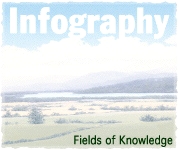
 | |
Bats | |
The following sources are recommended by an expert whose research specialty is bats. |
· Altringham, J.D. 1996. Bats Biology and Behaviour. Oxford University Press, 262 pages. This book is aimed primarily at undergraduate and graduate students wishing to learn about bats, but also illustrates how a study of one group of animals can contribute to a wider understanding of the processes which shape the natural world. It includes comprehensive information on the evolution and diversity of bats, flight, echolocation, hibernation, reproduction and development, behavioral ecology, and conservation.
· Bat Conservation International. This web site has reading lists, educator resources, frequently asked questions, and articles from back issues of BATS magazine. There is also information on bat houses, bats and rabies, bats in bridges, mines, and buildings (with exclusion guidelines), as well as much more. http://www.batcon.org/home/default.asp
· Hill, J.B., and J.D. Smith. 1984. Bats: A Natural History. University of Texas Press, 243 pages. Written from an academic perspective, this book contains information about world bats, including reproduction, growth, flight, and echolocation. Contains maps showing distribution of bat families and line drawings of anatomy.
· Kunz, T.H., ed. 1988. Ecological and Behavioral Methods for the Study of Bats. Smithsonian Institution Press, 533 pages. An excellent resource for anyone interested in field research on bats. Topics covered include bat capture, care in captivity, marking and observational techniques, radiotelemetry, photography, age determination, reproductive assessment, allozyme techniques for kinship assessment, and much more. The detailed chapters are clearly written, well illustrated, and include extensive bibliographies. Addresses for equipment and supplies are included.
· Nowak, R.M. 1994. Walker's Bats of the World. Johns Hopkins University Press, 287 pages. Adapted from Walker's Mammals of the World, this text provides an introduction to the 18 bat families and numerous representative species. It also includes a world distribution of bats, appendix, and copious literature citations.
· Wilson, D.E. 1997. Bats in Question: The Smithsonian Answer Book. Smithsonian Institution Press, 168 pages. A user-friendly format introducing the world of bats through questions and answers highlighting the most commonly asked questions about bats, myths and misconceptions, and the need for bat conservation. This is the one resource for all introductory inquiries about bats.
· Graham, G.L. 1994. Bats of the World: A Golden Guide. Golden Press, 160 pages. A pocket-sized introduction to the world of bats and their field characteristics. Includes information about distribution, taxonomy, natural history, and conservation.
· Kunz, T.H., and P.A. Racey, eds. 1998. Bat Biology and Conservation. Smithsonian Institution Press, 365 pages. This book presents recent research and reviews of more than 35 of the world's leading authorities on bats, discussing topics such as bat phylogeny and evolution, functional morphology, echolocation, and conservation.
· Kunz, T.H., ed. 1982. Ecology of Bats. Plenum Press, 425 pages. Contributions from the world's foremost bat biologists make this volume essential reading for all serious students of bat biology. Contents include chapters on roosting ecology, reproduction, growth and survival, physiology, morphology, feeding behavior, bat-plant interactions, and more.
· Lollar, A., and B. Schmidt-French. 1998. Captive Care and Medical Reference for the Rehabilitation of Insectivorous Bats. Bat World Publications, 329 pp. The definitive source for rehabilitation of insectivorous bats plus complete list of bat food habits, winter strategies, rabies information, and guidelines of how to display bats to the public.
· Macdonald, D., ed. 1987. The Encyclopedia of Mammals. Facts on File Publications, 895 pages. A comprehensive resource of world mammal species. Includes detailed species list index, color plates of each mammalian order, and descriptive family information including geographic distribution.
· Richarz, K., and A. Limbrunner. 1993. The World of Bats. English translation by W. Charlton, THF Publications, 192 pages. An excellent, well-illustrated introduction to bats of the world. Includes information on feeding strategies, general natural history, etc. Includes a section on "Bats and Humankind," which covers the roles of bats in local economies and folklore.
· Tuttle, Merlin D. 1997. America's Neighborhood Bats (revised edition). University of Texas Press, 98 pages. An excellent layman's introduction to American bats, covering a wide range of issues from public health and nuisance concerns to bat values and conservation needs. Common North American bats are featured with natural history information, color photographs, and a key to identification.
· Tuttle, Merlin D., and D.L. Hensley. 1996. The Bat House Builder's Handbook (revised edition). Bat Conservation International, 34 pages. A valuable "how to" manual on the design, installation, monitoring, and conservation impact of artificial bat roosts. Includes several easy-to-build plans and up-to-date research results on artificial roosting preferences of common North American bat species.
· Wilson, D.E., and D.M. Reeder, eds. 1993. Mammal Species of the World. Smithsonian Institution Press, 1,206 pages. Perhaps the definitive reference of world mammal species. Includes the detailed classification of all 925 species of bats developed by bat specialist Karl Koopman from the American Musuem of Natural History in New York.
"The Infography about Bats"
http://www.infography.com/content/126458474493.html
© 2009 Fields of Knowledge
Essex, Iowa 51638-4608 USA